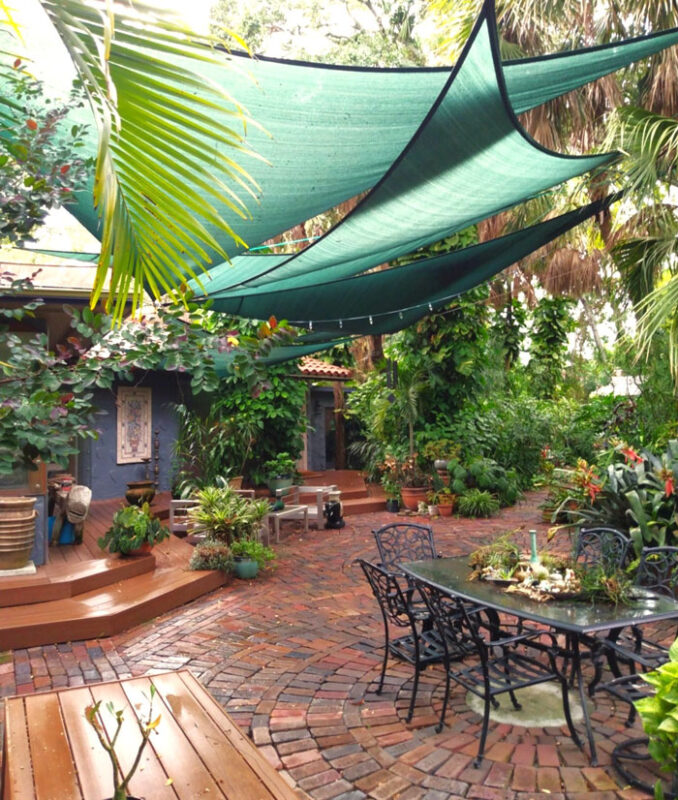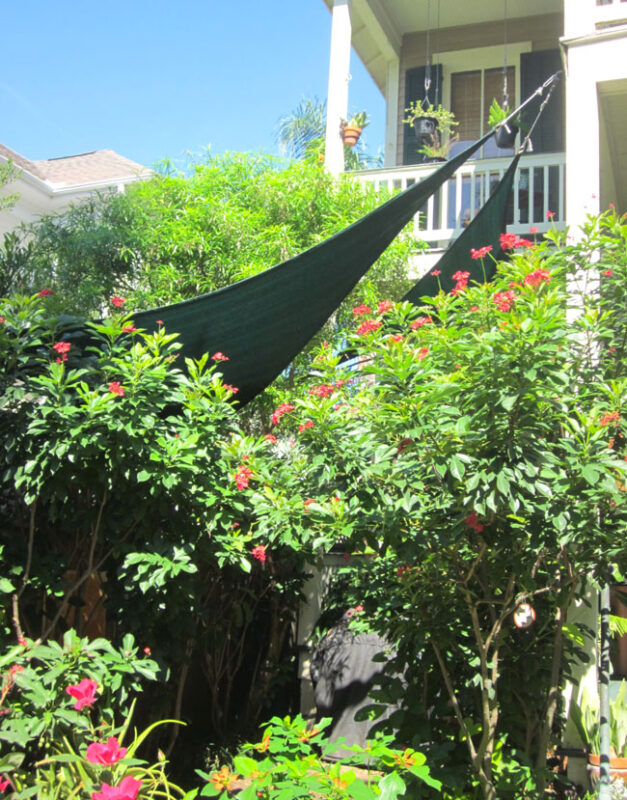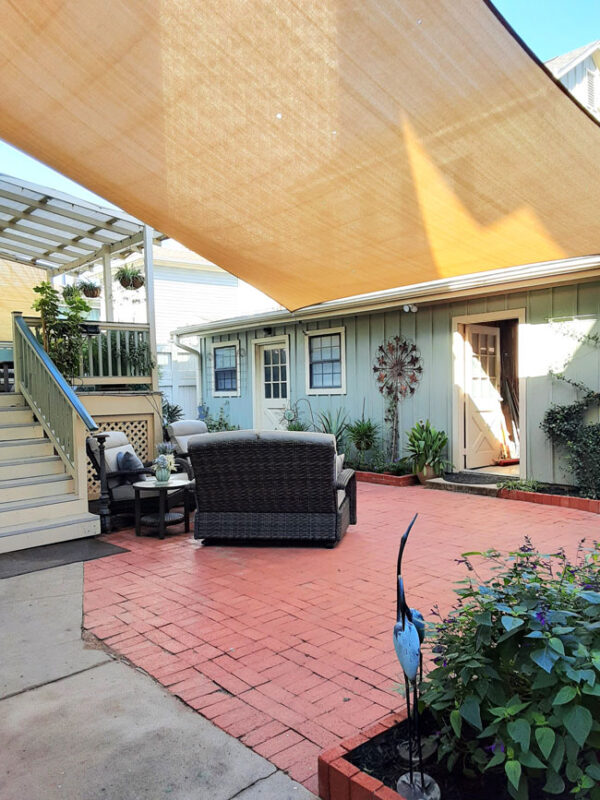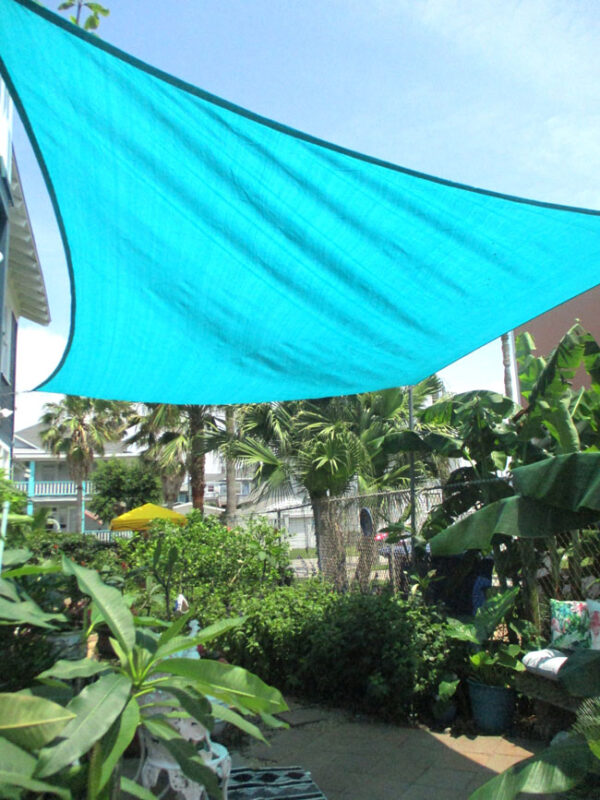Subdue summer sun with a shade sail – by Diane Morey Sitton

It’s no wonder shade sails are more popular than ever for shading patios, decks, poolsides and other outdoor spaces. The sail-like garden structures are relatively easy to install, they are budget-friendly compared to pergolas and other permanent structures, and their geometric configurations and eye-catching colors create dramatic focal points.
If you’re new to the idea of shade sails, rest assured that the concept is well tested. In ancient Egypt, vendors used large swaths of fabric to protect themselves and their merchandise from the sun. Large canvas sails shaded spectators at Rome’s Colosseum. The heavy sails were pulled into place by sailors experienced with manhandling sails aboard Roman ships. Even pirates were creative when it came to escaping the scorching sun. In Barbados and Tortuga, they made simple shade sails from pieces of canvas they tore from worn out sails.
Of course, shade sails have come a long way since the days of galley ships and scallywags.
In the 1950s, the availability of lightweight, synthetic materials made shade sails budget-friendly and easy to handle. Before long, they became a “modern” alternative to traditional arbors and vine-draped pergolas. Their popularity grew even more in the 1990s with the advent of “shade cloth.” Today, the knitted, breathable fabric not only contains inhibitors that block harmful UV rays, but it resists mildew, mold, fading, tearing and fraying.

The first step toward creating “cool shade” for your deck or patio is to evaluate the space. Consider the direction of the sun and the size of the area you wish to shade. Remember that each corner of the sail requires an anchor point (a sturdy post, a tree, the corner of your house.) Usually, a single sail is adequate for a small space; to shade large decks and patios and to increase the WOW factor, folks sometimes overlap multiple sails instead of using one large sail.
Either way, for the best results you need to apply considerable tension to the sail during installation. Use the DIY installation kit that came with the sail; otherwise, attach the sail to the anchor points using stainless steel turnbuckles, snap hooks or other appropriate hardware.

Shade sails and summer, you bet!
Besides creating festive ambience, they provide shade and allow ventilation (which reduces the temperature beneath the sail); they block harmful UV rays, and they help protect outdoor furniture from fading.
So sit back, sip on an icy cold soda and savor the sights and sounds of summer. You’ve got it made in the shade!


